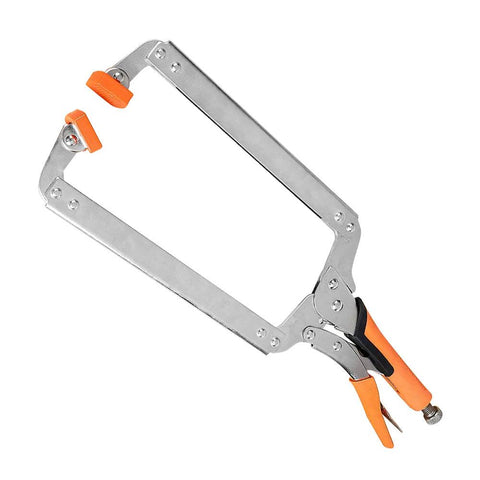Choosing the Right Clamp Size for Your Project: A Practical Guide

Selecting the correct clamp size for your project can be the difference between success and frustration in the workshop. Whether you're working on a woodworking project, metalwork, or even a simple DIY task, the clamp you use must fit the specific needs of the job. A clamp that's too small may fail to hold the work securely, while one that's too large can be cumbersome and ineffective. Understanding how to determine the right clamp size is essential for both precision and efficiency.
The first factor to consider is the size of the workpiece itself. When selecting a clamp, it's crucial that the clamp's capacity - the maximum distance the jaws can open - matches or exceeds the size of the material you're working with. For example, if you're gluing two pieces of wood that are three inches thick, a clamp with a jaw opening of at least three inches is necessary to apply adequate pressure. A common mistake is underestimating how much the clamp needs to open, which results in frustration when the clamp cannot span the workpiece. Measuring the dimensions of your material beforehand ensures that you select a clamp with the appropriate reach.
Equally important is the clamp's throat depth. The throat depth is the distance from the clamp's screw or tightening mechanism to the back of its frame, which determines how far into the material the clamp can reach. If you're working with wide surfaces like a large panel or a door, you'll need a clamp with a deeper throat to apply pressure evenly across the material. A shallow throat depth may only grip the edges of the piece, leaving the center unsupported. For large or uneven workpieces, choosing a clamp with a deeper throat helps ensure uniform pressure, which is especially important when gluing to prevent gaps or weak bonds.
Once you've determined the right jaw opening and throat depth, the next consideration is the type of pressure your project requires. Clamps come in a range of sizes, but they also vary in the amount of force they can apply. For heavier-duty jobs, like clamping thick hardwood or securing metal pieces, you'll need a larger clamp that can exert substantial pressure without bending or failing under stress. For instance, a bar clamp or pipe clamp might be necessary for projects involving large workpieces or tasks requiring strong pressure over an extended length. On the other hand, for smaller, more delicate tasks, a lightweight spring clamp or a hand screw clamp will offer more control without risking damage to the material.
The length of the clamp's bar or pipe is another critical factor in choosing the right size. For larger woodworking projects, such as making tabletops or cabinets, you'll need clamps that are long enough to span the width of the piece and apply pressure evenly across its entire length. For example, if you're gluing a panel that's 36 inches wide, you'll need a clamp at least that long to provide full support. Using a clamp that's too short can lead to uneven clamping pressure and misalignment, which can affect both the strength and appearance of the finished product.
It's also important to remember that the number of clamps used on a project matters just as much as the size. For many woodworking projects, especially those involving glue, one clamp might not be enough to secure the piece evenly. In these cases, it's advisable to use several clamps spaced evenly along the workpiece to apply consistent pressure. The general rule is that more clamps provide better control, helping to avoid warping, twisting, or uneven bonding during assembly. If your project requires several points of pressure, smaller clamps spread across multiple positions may be preferable to using a single oversized clamp.
Finally, the material and nature of your project will influence your clamp choice. For delicate materials, like softwoods or veneers, oversized clamps that exert too much pressure can crush or dent the workpiece. In these situations, smaller clamps that offer more precise control, or padded clamps that distribute pressure gently, are ideal. Conversely, for dense hardwoods or metals, you'll need larger, heavy-duty clamps that can withstand greater force without breaking or damaging the material. Understanding the material you're working with will help you select a clamp that applies just the right amount of pressure without risking damage.
In summary, choosing the right clamp size is about balancing the needs of your project with the specific features of the clamp. By considering the size of the workpiece, the throat depth, the type of pressure required, and the number of clamps needed, you can make an informed decision that ensures your project stays securely in place. With the right clamp, your work will not only be easier and more precise but also safer and more efficient. Whether you're a seasoned professional or a weekend hobbyist, investing in the right size and type of clamps will set you up for success in the workshop.